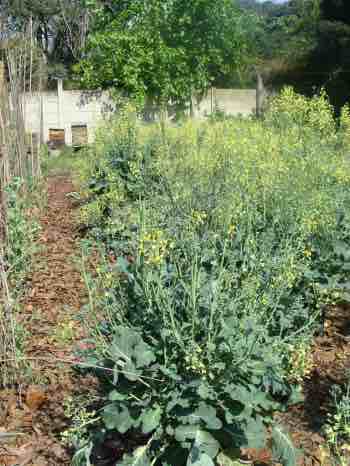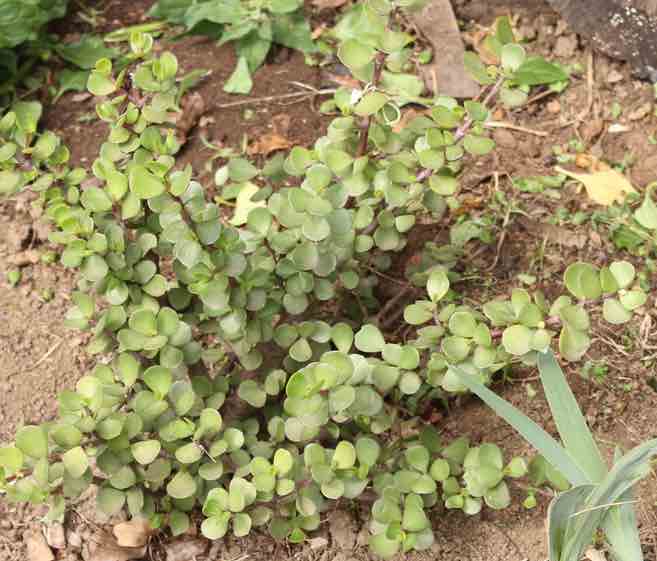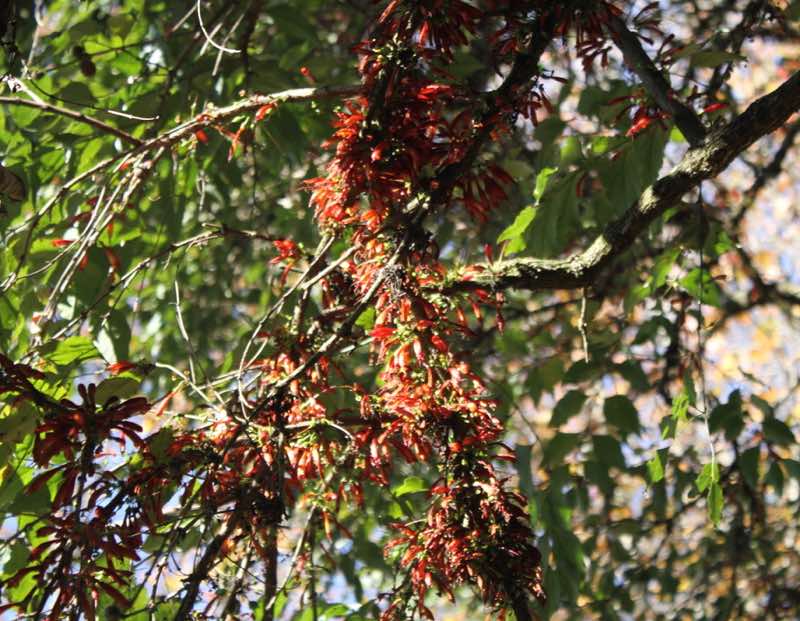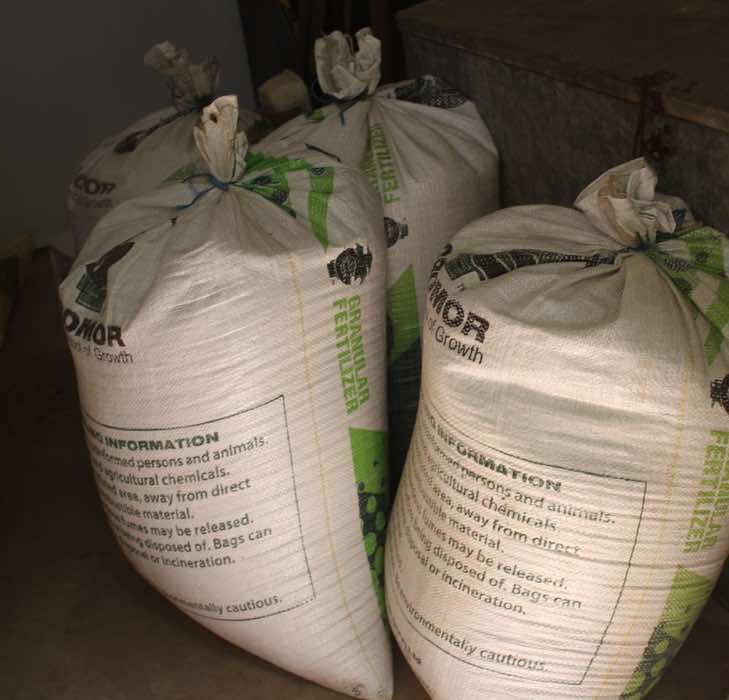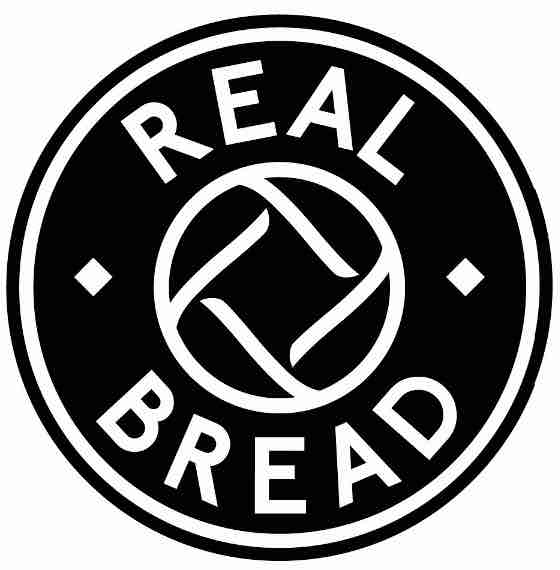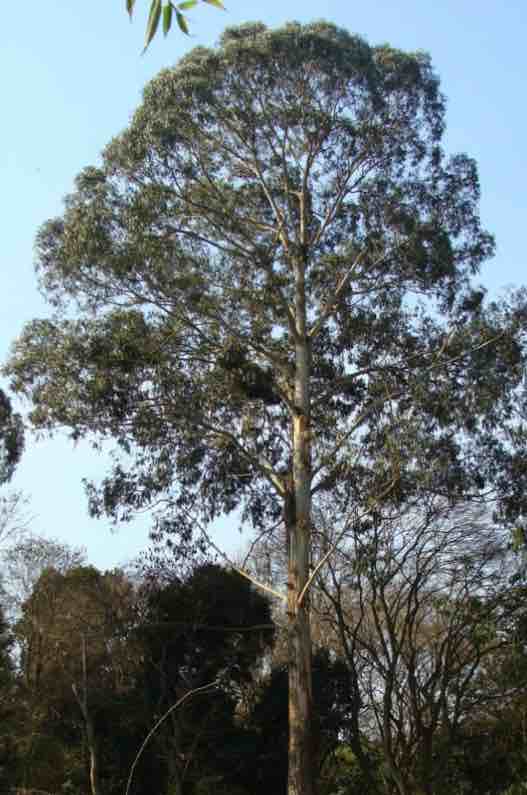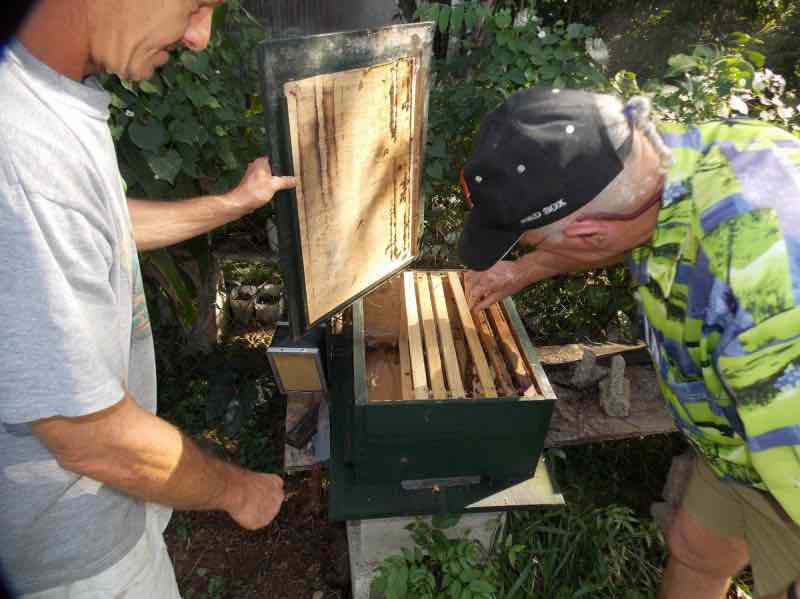| Back to Back Issues Page |
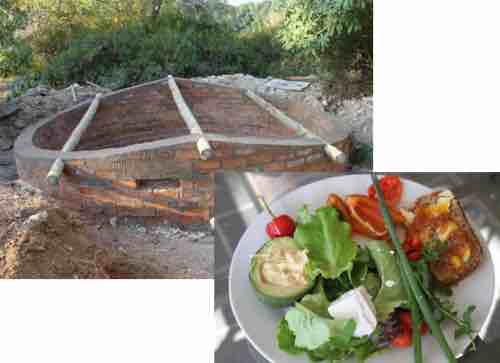 |
|
Create a bee-friendly environment November 18, 2020 |
DearCreate a bee-friendly environment
Three weeks ago I wrote about keeping bees, the most interesting hobby of my life. It has beaten gliding the skies, writing books, and carpentry hands down; and is a fundamental Green Zone issue. In case you missed it, cyan is a mixture of blue and green.
So you don't have a place for a hive? It is certainly not for every one. But you could create a bee-friendly environment in your garden without too much trouble. Bees are pollinatorsThe Netherlands is a tiny country, densely populated. Its greatest natural resource is a highly educated farming community making them the second greatest food exporter in the world, after the USA. But it is only half the size of the US state of South Carolina!Pollination of crops by bees is central to their thinking; it has a dramatic effect on yields.
"Twice as much food using half the resources." - Dutch saying Neonicotinoids and glyphosate (Roundup)Whilst there does remain some controversy, scientists around the world are increasingly fingering insecticides and herbicides as the cause of the colony collapse disease of bees, just as they kill humans. I'm sure we are all aware of the massive punitive payouts to the victims of Roundup in the USA.They are antibiotics, having a profoundly negative effect on the healthy bacteria in the intestines of bees known as the microbiome; and humans too.
“We all know that glyphosate is an antibiotic. It is very toxic to bacteria. It was even patented as an antibiotic,” says Nathan Donley, a senior scientist at the Center for Biological Diversity. Glyphosate is often sold commercially under the name Roundup. These chemicals are totally counter to the determination of the Dutch to double their food production; they create a most unfriendly environment for all insects, including bees. Bees in AmsterdamContrary to the rest of the world, bees in the capital city of the Netherlands have increased by 45% in the last twenty years. In general town gardens produce exceptional honey with little of the residues of agricultural chemicals.Cause and effect is often difficult to prove, but the environmentalists employed by the city have been sowing indigenous plants on public lands, for example around train stations. Chemical pesticides have been banned too. The goal has been to convert at least half of all public green areas to flowering plants. Whilst the emphasis has been on indigenous flowers, other species that produce fruit, for example, would also be used. Certainly this has had a role to play in turning Holland into such a massive food exporter. Wild beesRecently, a study from the University of Vermont has shown that the wild bee populations in key agricultural regions of America have declined by 23% during just the last five years.We can't have it both ways; either we ban these toxic chemicals as the Netherlands has done and have more diverse pollinators and increased food production, or we support large corporations that manufacture and market them, killing insects and indigenous wild plants. It does come at a cost though. Will Farmer Jones have to scratch in the loft to find and then sharpen that old hoe and start to till out the weeds? New farming methods using mulching, for example, will be needed.
"When it goes well with the insects, it also goes well with the birds and mammals." - Geert Timmermans "When it goes badly for the insects, it also goes badly with the birds and mammals, including us humans." - Bernard Preston SpekboomEvery country now needs a pollinator strategy to revive the bees, butterflies and many other insects that are central to the pollination of our food crops.Even though keeping bees may be beyond you, could you create a bee-friendly environment at your home, and even beyond, in strips of unused land? In my own country, we are promoting this plant called Spekboom that has prolific flowers that bees love, and produces a unique tasting honey.
Tree fusciaThe tree fuscia, Halleria lucida, is another marvelous indigenous evergreen to South Africa that the bees love. In its own right, it is a wonderful plant to have in any garden.Plant indigenous trees for bees
PreppingIn one sense making a bee-friendly environment is a form of prepping. Rather than stocking up on canned foods for a disaster let us rather invest our time and energy in planting vegetables and fruit trees that provide nectar and pollen for our native insects; and food for ourselves.Planting broccoli and radish, blueberries and a lemon tree, corn and beans will mean that we not only have ample nutritious organic foods for the pantry, but a garden alive with bees and other pollinators like butterflies. Instead of accepting that natural disasters are a foregone conclusion, you are actually taking small baby steps to mitigate against yet more global warming, with the attendant floods, wildfires and hurricanes. At this point in time, Covid-19 is giving people who live this lifestyle the miss. They spend time outdoors getting sunshine for vitamin D, and enjoying whole foods that keep their blood glucose in order. You are prepping for the day the virus sneaks in the backdoor, knowing you'll get sick, maybe very sick, but not die. It comes as no surprise that the bug is not decimating the elderly in the five Blue Zone countries as it has elsewhere. The other little bonus is that you will absolutely know that your life has become both special and very interesting. Personally I could ask for nothing more; it has brought me what the Blue Zone folk in Okinawa call ikigai; a reason for being. Living life this way greatly increases your chances of living a long and fruitful life, whilst knowing that you are doing your little bit to pass a pristine and habitable Mother Earth on to future generations. This is pure Cyan Zone stuff.
Dig out the grassIt is interesting that everywhere greenies are digging out their lawns, and not covering the area with paving stones but planting it to fruit and vegetables that bring them nutritious food and help create a bee-friendly environment.
“Bees and insects have no food because everything is green, everything is grass.” - Deborah Post from Honey Highway Synergy of green livingThere are few things that bring more pleasure than being able almost every month in the year to harvest fresh, unsprayed fruit from the garden. One couldn't do that in Chicago of course, but in our moderate climate there is always food available.It's November as I write, and the massive six-week mulberry crop is over, but yesterday I picked the first blue berries. The six month citrus crop is coming to an end but we have a huge amount of lemon and lime juice frozen in cubes. We continue to enjoy an avocado a day but the crop will end by Christmas and then there is a five month wait until May. We now have peaches every day, the plums are ripening and the cherry guavas are forming; all are dependent on insect pollinators.
If we can put men on the moon, are we not able to create huge nets that could vacuum swarms of locusts into harvesters that would turn them into animal protein for our livestock? But no, we'd rather spray vast quantities of insecticides over them, killing friend and foe alike. The granary weevil is a great enemy of our grain, destroying a whole bag of our wheat a few years back until we discovered there is another way of dealing with the pest. Normally a highly toxic poison called phostoxin is widely used in agriculture. Instead, we have learned with great success that freezing the wheat for two weeks kills the pests and their eggs, so we can store it for a whole year in large buckets. This year we have ordered half a ton directly from the farmer and will be supplying local bakers with freshly ground 100% wholemeal flour.
Storing wheat berries This is the only way to bake what the British are now calling 'real bread'; rich in natural fibre and all the very important lignans, nutritious fatty acids, minerals and vitamins. It tastes incredibly good, particularly when turned into sourdough. Once you taste it, you'll never go back to commercial bread.
Indigenous versus exotic plants
“Don't get waylaid by the indigenous versus exotic debate; it's a red herring. Just scatter more bee-friendly flowering seeds, especially if they also provide good food.” - Bernard Preston We can waste a lot of energy unnecessarily arguing about the virtues of indigenous plants, detracting from our commitment to create a bee-friendly environment. Bees need help from both. Myself, given the choice, I would first plant an indigenous tree like the beautiful Halleria lucida, but every South African beekeeper loves the Eucalypt too. If we were to remove every gum tree in the country, as some would have us do, the bees would starve. It is their single biggest source of nectar. Obviously we would not recommend planting a highly invasive exotic, even if it is a prodigious producer of nectar and pollen. Thus, if such a species is already in your area, and it is bee-friendly, let it be, but think twice before importing any other exotics.
"Responsibility is what awaits outside the Eden of Creativity." - Nadine Gordimer Would you take on the responsibility to make your garden rather more bee-friendly? It's no small thing you are doing. You are creating posterity; right now every single day the possibility of our pristine world surviving this century is becoming less likely? The second vilest of the seven 'deadly sins', greed, lies firmly behind it. Bee City USABee City USA has many wonderful ideas on making your home a more friendly place for bees. One I learned is that bees find a patch of flowers of a single species about a metre in diameter much more easily. They fly pretty fast and can miss a single bloom.Read their take on how to create the right habitat.
'Never doubt that a small group of thoughtful, committed, citizens can change the world. Indeed, it is the only thing that ever has.' — Margaret Mead Each one, teach one
Simple because acquiring a hive filled with bees is not difficult. But to do it well takes a lifetime of learning. This keeper, my brother has introduced 35 new people to beekeeping in the last three years, helping them acquire a swarm and teaching them the rudiments of the art. That is inspirational. Our grandfather's legacy lives on.
MicrobiomeOne last little plug for this week is for those who have been brave enough to keep reading this far. The bacteria and other bugs that inhabit our gut, weighing an incredible two kilograms in the happy tum, have profoundly beneficial effects on our well-being.In most of us they are seriously depleted, not just because of small amounts of agricultural poison remnants in our food but many other chemicals like artificial sweeteners that we consume daily. You can pay a lot of money for probiotics, usually limited to three or four bugs; instead we make kefir in our own kitchen. It's like a very strong yoghurt containing over 30 different beneficial bacteria. It takes five minutes only to prepare each day initially; then perhaps twice a week. Don't think Roundup just kills insects. It has a profoundly negative influence on our health too. Next weekNext week we return to a Blue Zone issue; something that will help you live a longer and more fruitful life.Pass this newsletter on to friends and family and those for whom you think it might be pertinent but only if you feel it is of value; we all get more than enough spam. And start thinking about what you are going to plant in your garden that enhances the lives of insects, remembering that about one in four mouthfuls of everything you eat is pollinated by bees.
Till next week. Bernie
|
| Back to Back Issues Page |
